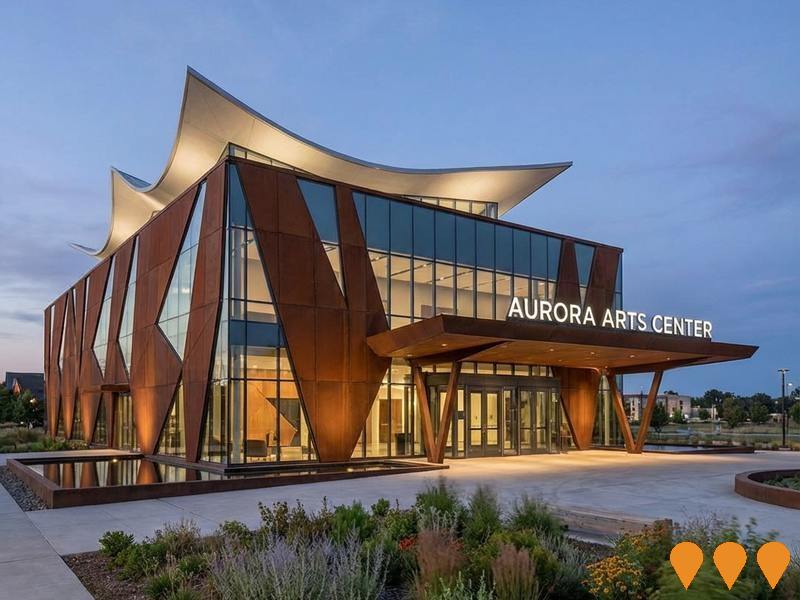Chart Color Schemes
est. as @ -- *
ABS ERP | -- people | --
2021 Census | -- people
Sales Activity
Curious about local property values? Filter the chart to assess the volume and appreciation (including resales) trends and regional comparisons, or scroll to the map below view this information at an individual property level.
Find a Recent Sale
Sales Detail
Population
Population growth drivers in Mudgee are strong compared to national averages based on AreaSearch's ranking of recent, and medium to long-term trends
Mudgee's population was around 13,084 as of November 2025. This reflected an increase of 521 people since the 2021 Census, which reported a population of 12,563 people. The change was inferred from the estimated resident population of 12,822 in June 2024 and an additional 631 validated new addresses since the Census date. This resulted in a density ratio of 198 persons per square kilometer. Mudgee's growth rate exceeded both its SA4 region (2.9%) and SA3 area since the 2021 census, marking it as a growth leader. Natural growth contributed approximately 58.7% of overall population gains during recent periods.
AreaSearch adopted ABS/Geoscience Australia projections for each SA2 area, released in 2024 with 2022 as the base year. For areas not covered by this data, NSW State Government's SA2 level projections were used, released in 2022 with 2021 as the base year. Growth rates by age group from these aggregations were applied to all areas for years 2032 to 2041. Based on demographic trends and latest population numbers, Mudgee's population is projected to expand by 2,377 persons to 2041, reflecting an increase of 16.0% over the 17-year period.
Frequently Asked Questions - Population
Development
AreaSearch assessment of residential development activity positions Mudgee among the top 25% of areas assessed nationwide
Mudgee has seen approximately 122 new homes approved annually. Over the past five financial years, from FY-21 to FY-25, around 613 homes were approved, with an additional 35 approved so far in FY-26. On average, about 0.5 people have moved to the area for each dwelling built over these five years.
This suggests that new supply is meeting or exceeding demand, providing ample buyer choice and capacity for population growth beyond current forecasts. The average expected construction cost value of new dwellings is around $380,000. In FY-26, $7.1 million in commercial development approvals have been recorded, indicating the area's primarily residential nature. Compared to the rest of NSW, Mudgee shows 112.0% higher development activity per person.
The new development consists of approximately 72.0% detached dwellings and 28.0% townhouses or apartments, maintaining the area's traditional low-density character with a focus on family homes. With around 80 people per approval, Mudgee reflects a low-density area. Looking ahead, Mudgee is expected to grow by approximately 2,089 residents through to 2041. At current development rates, new housing supply should comfortably meet demand, providing good conditions for buyers and potentially supporting growth beyond current population projections.
Frequently Asked Questions - Development
Infrastructure
Mudgee has emerging levels of nearby infrastructure activity, ranking in the 25thth percentile nationally
The performance of a region is significantly influenced by changes in local infrastructure. AreaSearch has identified ten projects that could potentially impact this area. Notable among these are the Kandos to Gulgong Rail Line Reinstatement project, Logan Estate development, Short Street Residential Development initiative, and Mudgee Spring Lifestyle Estate plan. The following list provides details of those projects deemed most relevant.
Professional plan users can use the search below to filter and access additional projects.
INFRASTRUCTURE SEARCH
 Denotes AI-based impression for illustrative purposes only, not to be taken as definitive under any circumstances. Please follow links and conduct other investigations from the project's source for actual imagery. Developers and project owners wishing us to use original imagery please Contact Us and we will do so.
Denotes AI-based impression for illustrative purposes only, not to be taken as definitive under any circumstances. Please follow links and conduct other investigations from the project's source for actual imagery. Developers and project owners wishing us to use original imagery please Contact Us and we will do so.
Frequently Asked Questions - Infrastructure
Central-West Orana Renewable Energy Zone (REZ) Transmission Project
Australia's first coordinated Renewable Energy Zone transmission project. Delivers new 500 kV and 330 kV lines, energy hubs and substations across approximately 20,000 km2 in central-west NSW. ACEREZ consortium (Acciona, Cobra, Endeavour Energy) appointed as the Network Operator for design, construction, financing, operation and maintenance over 35 years. Initial network capacity of 4.5 GW, expanding to 6 GW by 2038. Construction commenced June 2025, with staged commissioning from 2027 and full operations targeted for 2028-2029. Project reached financial close in April 2025.
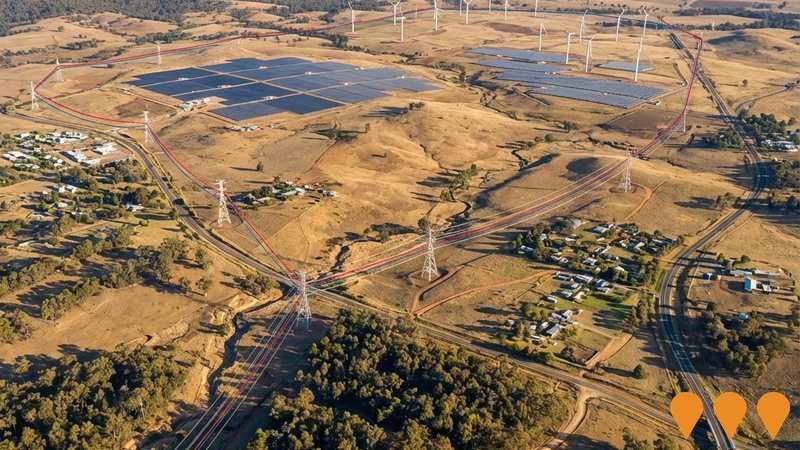
Central-West Orana REZ Transmission Network
Major transmission infrastructure project involving the design, construction, and operation of new 500kV and 330kV transmission lines to connect the Central-West Orana Renewable Energy Zone (REZ) to the National Electricity Market. The project includes network upgrades and new substations centred around Dubbo, Dunedoo, and Mudgee, connecting to the existing grid near Wollar and Mount Piper.
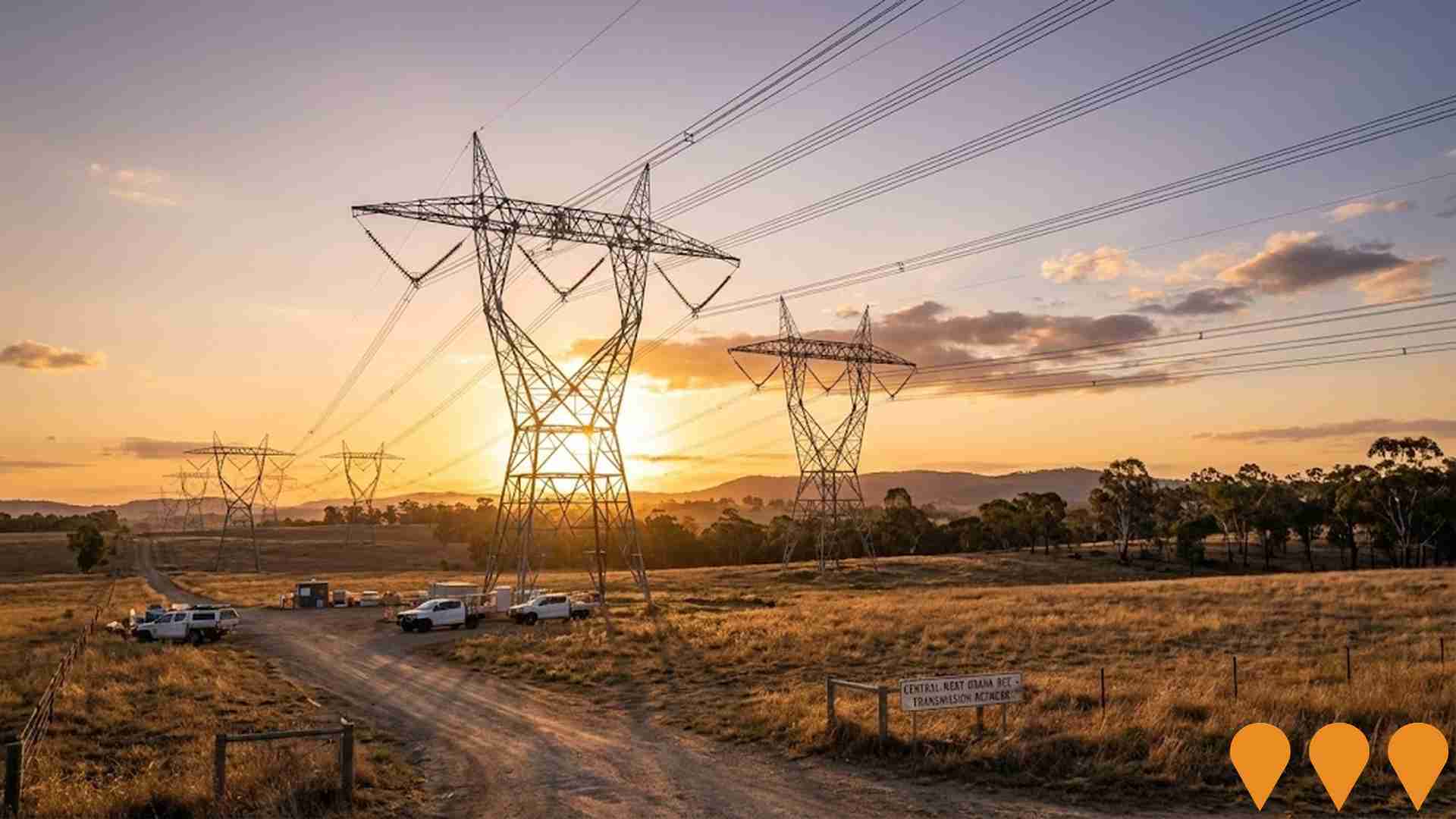
Kandos to Gulgong Rail Line Reinstatement
Feasibility study for reinstating and upgrading the 93km non-operational railway line between Kandos and Gulgong, connecting the Lithgow line to the main east-west line from Newcastle to Dubbo. The project is primarily aimed at supporting regional freight, particularly for coal transport to Mount Piper Power Station, but also explores potential passenger services. The initial feasibility study was completed in 2020 and showed a positive result based on committed freight volumes, but requires more detailed work before progressing to planning and implementation. The project was assessed under the NSW Government's Fixing Country Rail program and is being transferred into the new Regional Network East/West Uplift Program (RNEW Program) for further assessment and prioritisation. Public opposition due to the potential impact of coal trains through Mudgee has been noted.
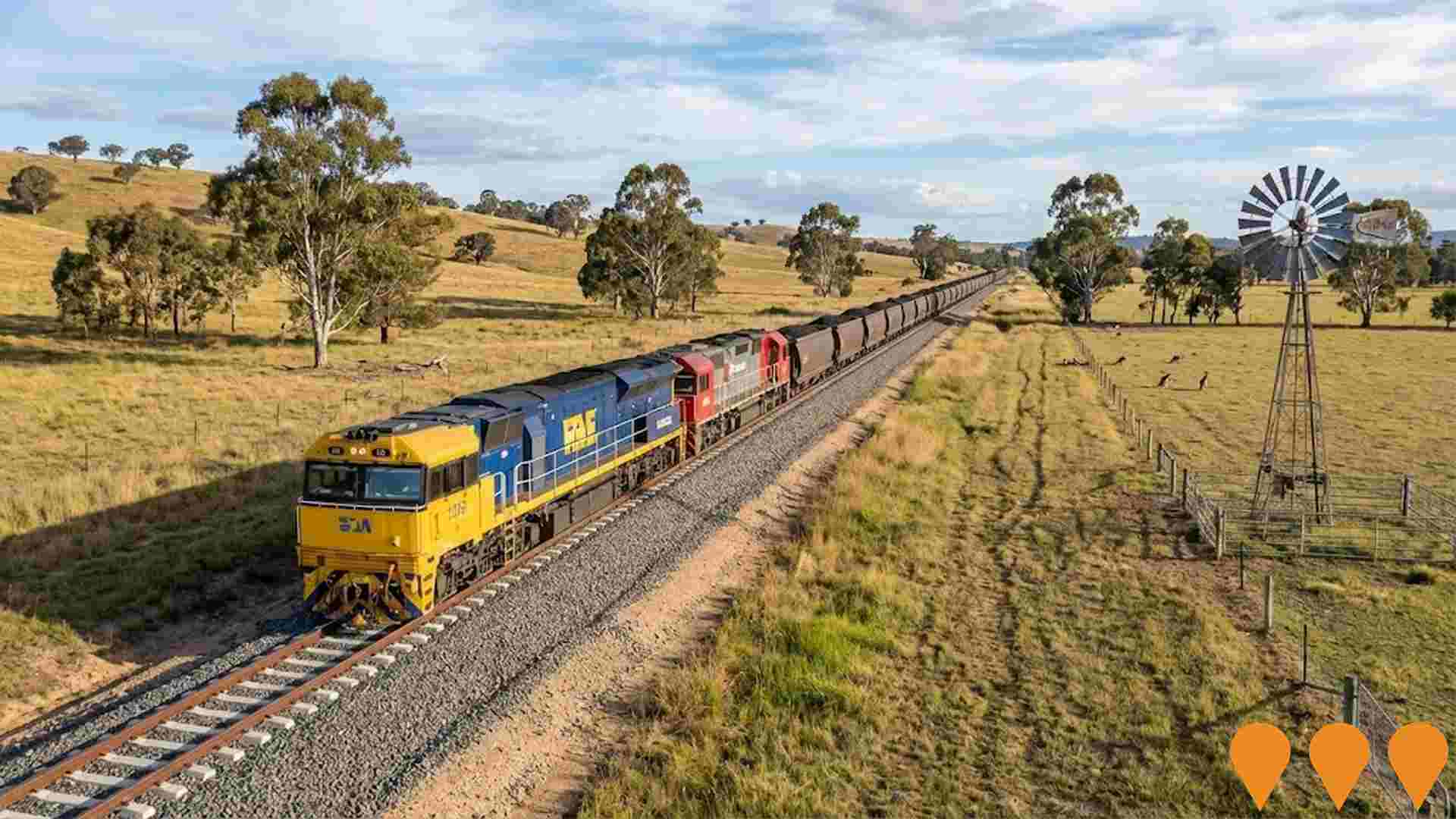
Mudgee Hospital Redevelopment
State-of-the-art $70.7 million hospital redevelopment completed in 2020, featuring emergency department, maternity unit, general medical and surgical units, oncology services, renal dialysis, and dental services. Opened ahead of schedule with new CT scanner.
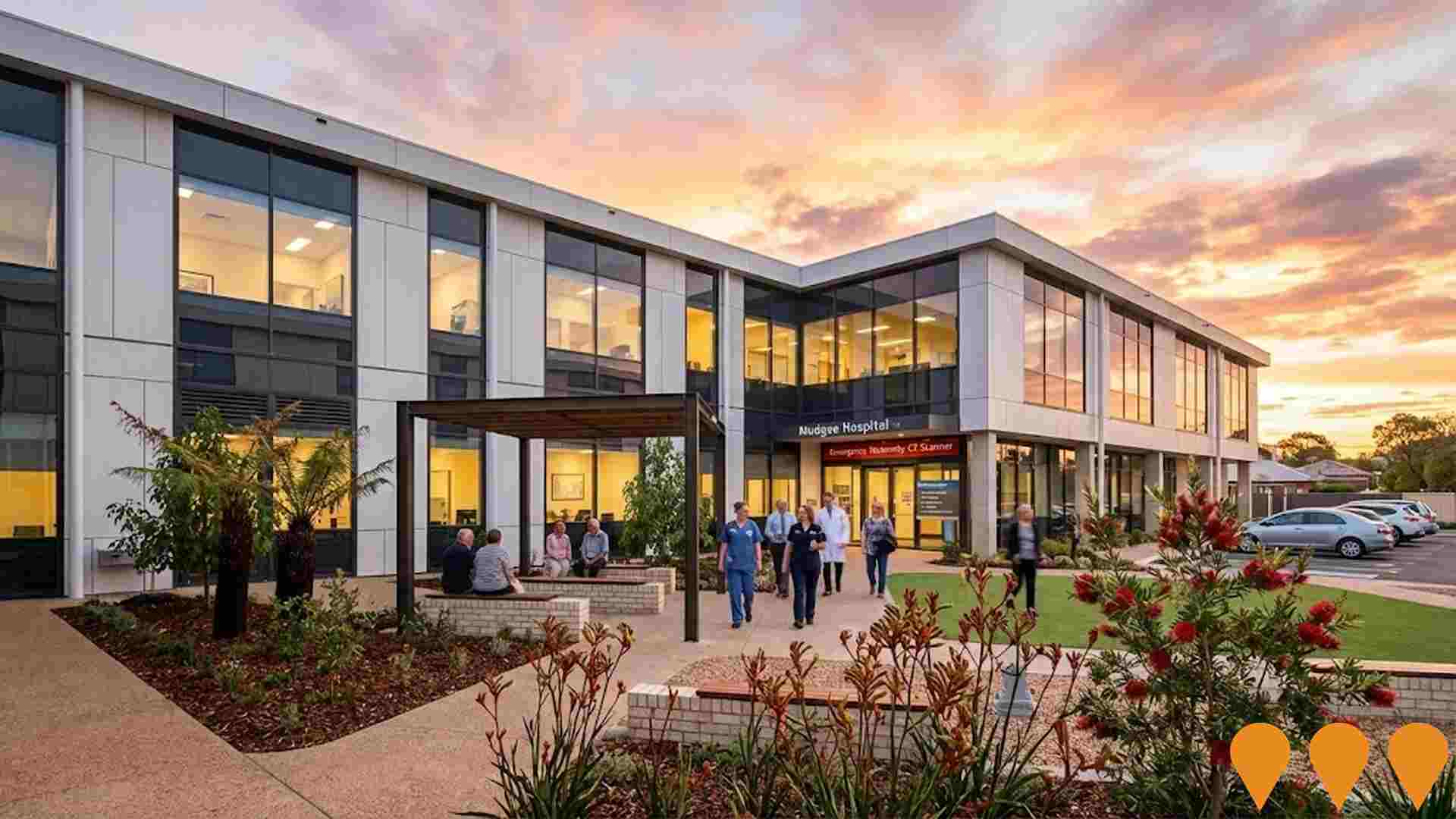
Caerleon Estate
Caerleon Estate is Mudgee's first masterplanned community, offering approximately 1,700 residential lots across multiple stages. The development includes over 40 hectares of open space, retail precinct, childcare centre, and retirement village. Recent stages 13 and 14 comprising 419 lots have completed development applications through Maker Engineering. The estate features NBN connectivity, house and land packages, and planned community amenities.

Short Street Residential Development
New residential subdivision development providing additional housing stock for growing Mudgee population. Multi-stage development with modern family homes and community facilities.

Mudgee Spring Lifestyle Estate
$14 million over-55s lifestyle community by Lincoln Place featuring 206 planned homes across multiple stages. Resort-style amenities including clubhouse, swimming pool, bowling green, pickleball court, gym, and BBQ areas. Stage 1 of 49 homes under construction.

Logan Estate
Logan Estate is Mudgee's most convenient residential community positioned in the expanding growth centre of Mudgee. Offering affordable house and land packages with scenic views and proximity to Mudgee CBD, schools, and cellar doors. Land lots range from 600-800 square metres with prices starting from $238,000.

Employment
AreaSearch analysis places Mudgee well above average for employment performance across multiple indicators
Mudgee has a skilled workforce with strong manufacturing and industrial sectors. Its unemployment rate is 2.1%.
As of June 2025, 6799 residents are employed while the unemployment rate is 1.6% lower than Rest of NSW's rate of 3.7%. Workforce participation in Mudgee is 62.4%, higher than Rest of NSW's 56.4%. The dominant employment sectors among residents include mining, health care & social assistance, and retail trade. Mining employs a significantly higher proportion of workers in Mudgee compared to the regional level, with an employment share 7.4 times higher.
Health care & social assistance employs 12.2% of local workers, which is lower than Rest of NSW's 16.9%. Many residents commute elsewhere for work based on Census data analysis. In the year leading up to June 2025, labour force levels decreased by 2.3%, employment declined by 3.0%, and unemployment rose by 0.7 percentage points in Mudgee. This contrasts with Rest of NSW where employment fell by 0.1%, labour force expanded by 0.3%, and unemployment rose by 0.4 percentage points. Jobs and Skills Australia's national employment forecasts from May 2025 suggest potential future demand within Mudgee. These projections estimate a growth in national employment of 6.6% over five years and 13.7% over ten years. Applying these projections to Mudgee's employment mix suggests local growth of approximately 5.5% over five years and 12.3% over ten years, though this is a simple extrapolation for illustrative purposes and does not account for localised population projections.
Frequently Asked Questions - Employment
Income
The area's income profile falls below national averages based on AreaSearch analysis
AreaSearch's latest postcode level ATO data for financial year 2022 shows that median income in Mudgee is $50,109 and average income stands at $66,284. This contrasts with Rest of NSW's median income of $49,459 and average income of $62,998. Based on Wage Price Index growth of 12.61% since financial year 2022, current estimates for Mudgee would be approximately $56,428 (median) and $74,642 (average) as of September 2025. From the Census conducted in August 2021, household incomes rank at the 49th percentile, family incomes at the 46th percentile, and personal incomes at the 48th percentile in Mudgee. The income band of $1,500 - 2,999 captures 33.1% of individuals (4,330) in Mudgee, similar to metropolitan regions where this band captures 29.9%. After housing expenses, 85.1% of income remains for other expenses. The area's SEIFA income ranking places it in the 4th decile.
Frequently Asked Questions - Income
Housing
Mudgee is characterized by a predominantly suburban housing profile, with a higher proportion of rental properties than the broader region
In Mudgee, as per the latest Census evaluation, 85.7% of dwellings were houses while 14.3% were other types such as semi-detached homes, apartments, and 'other' dwellings. This compares to Non-Metro NSW's figures of 91.0% houses and 9.0% other dwellings. Home ownership in Mudgee stood at 31.9%, with mortgaged dwellings at 33.5% and rented ones at 34.6%. The median monthly mortgage repayment in the area was $1,733, exceeding Non-Metro NSW's average of $1,600. The median weekly rent figure for Mudgee was recorded as $363, compared to Non-Metro NSW's $300. Nationally, Mudgee's mortgage repayments were lower than the Australian average of $1,863, while rents were less than the national figure of $375.
Frequently Asked Questions - Housing
Household Composition
Mudgee has a typical household mix, with a higher-than-average median household size
Family households constitute 69.1% of all households, including 28.6% couples with children, 27.9% couples without children, and 11.5% single parent families. Non-family households account for the remaining 30.9%, with lone person households at 27.6% and group households comprising 3.4%. The median household size is 2.5 people, larger than the Rest of NSW average of 2.3.
Frequently Asked Questions - Households
Local Schools & Education
Educational outcomes in Mudgee fall within the lower quartile nationally, indicating opportunities for improvement in qualification attainment
The area's university qualification rate is 18.4%, significantly lower than the NSW average of 32.2%. This presents both a challenge and an opportunity for targeted educational initiatives. Bachelor degrees are most common at 13.5%, followed by postgraduate qualifications (3.1%) and graduate diplomas (1.8%). Vocational credentials are prominent, with 42.7% of residents aged 15+ holding them - advanced diplomas at 9.5% and certificates at 33.2%.
Educational participation is high, with 28.9% of residents currently enrolled in formal education. This includes 11.5% in primary, 7.5% in secondary, and 2.3% pursuing tertiary education. Mudgee's five schools have a combined enrollment of 3,110 students, operating under typical Australian school conditions (ICSEA: 957) with balanced educational opportunities. The educational mix includes two primary, two secondary, and one K-12 school. The area functions as an education hub, with 23.8 school places per 100 residents - significantly above the regional average of 13.9 - attracting students from surrounding communities. Note: where schools show 'n/a' for enrolments, please refer to parent campus.
Frequently Asked Questions - Education
Schools Detail
Nearby Services & Amenities
Transport
Transport servicing is low compared to other areas nationally based on assessment of service frequency, route connectivity and accessibility
Transport analysis shows 248 active transport stops in Mudgee, consisting of a mix of train and bus services. These stops are served by 36 individual routes, offering a total of 378 weekly passenger trips. Transport accessibility is rated excellent, with residents typically located 134 meters from the nearest stop.
Service frequency averages 54 trips per day across all routes, equating to approximately one weekly trip per stop.
Frequently Asked Questions - Transport
Transport Stops Detail
Health
Health performance in Mudgee is lower than average with common health conditions somewhat prevalent across both younger and older age cohorts
Mudgee faces significant health challenges.
Common health conditions are somewhat prevalent across both younger and older age cohorts. The rate of private health cover is approximately 52%, slightly higher than the average SA2 area, covering about 6,856 people. Mental health issues affect 9.0% of residents, while asthma impacts 8.7%. About 66.8% of residents declare themselves completely clear of medical ailments, compared to 62.9% across Rest of NSW. The area has 18.5% of residents aged 65 and over (2,427 people), which is lower than the 23.1% in Rest of NSW, broadly in line with the general population's health profile.
Frequently Asked Questions - Health
Cultural Diversity
Mudgee is considerably less culturally diverse than average when assessed alongside AreaSearch's national rankings for language and cultural background related metrics
Mudgee, as per the census data from June 2016, had a cultural diversity index of below average. This was evident in its population demographics: 90.7% were Australian citizens, 91.2% were born in Australia, and 95.4% spoke English only at home. Christianity was the predominant religion, with 58.2% of Mudgee's population identifying as Christian, compared to 59.9% across the rest of NSW.
The top three ancestry groups in Mudgee were Australian (32.2%), English (32.2%), and Irish (9.4%). However, there were notable differences in the representation of certain ethnic groups: Australian Aboriginal was slightly overrepresented at 5.0%, Maltese at 0.4%, and German at 3.1%.
Frequently Asked Questions - Diversity
Age
Mudgee's population is slightly younger than the national pattern
The median age in Mudgee is 36 years, which is significantly lower than Rest of NSW's average of 43 years and somewhat younger than Australia's median age of 38 years. The 25-34 age group comprises 14.2% of the population in Mudgee, compared to Rest of NSW. Conversely, the 65-74 cohort makes up 9.2% of Mudgee's population. According to data from the post-2021 Census, the 35 to 44 age group has increased from 12.4% to 14.3% of the population in Mudgee. Meanwhile, the 45 to 54 cohort has decreased from 11.7% to 10.0%. Population forecasts for 2041 indicate substantial demographic changes for Mudgee. Notably, the 35 to 44 age group is projected to grow by 27%, adding 506 people and reaching a total of 2,374 from its current figure of 1,867. In contrast, the 55 to 64 cohort shows minimal growth of just 1% (17 people).

